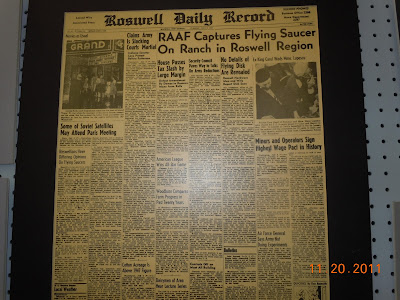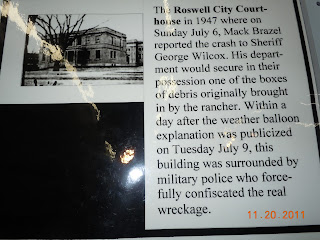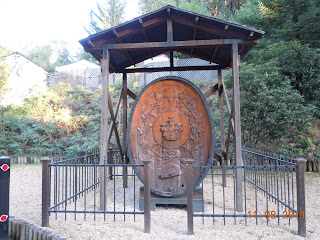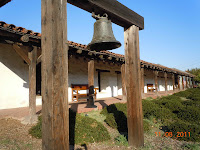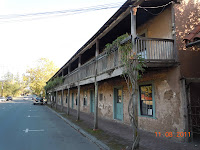 |
| USS Pampanito at Fishermans Wharf |
There is probably no better tour of a World War Two submarine than the one located at Fishermans Wharf in San Francisco California. The USS Pampanito is a treasure. This particular submarine was very active in the Pacific War and makes for a fun and very informative tour.
When your San Francisco vacation takes you to Fishermans Wharf, which it inevitably does, look for San Francisco Pier 45 which is behind the Musee Mecanique and you'll see the USS Pampanito berthed in front of another historic World War Two ship, the Jeremiah O'Brien.
Another Western Trips photo article you'll enjoy is the Tall Ship Balclutha at the San Francisco Maritime Museum.
Touring the USS Pampanito
The tour of the submarine Pampanito is a below deck experience. When you enter this floating submarine museum you begin by entering the rear torpedo room your. Your tour then takes you toward the front of the vessel. You'll pass by many small rooms including the kitchen, mess area, radio room, officers quarters, engine room and several others. You will also see a map that outlines the six war patrols.
Your first impression after climbing down into the submarine is a recognition of what it must have been like to serve for extended periods in such close quarters. Submarine duty back then as it is today is cut out for certain types of individuals. Some adapt much better than others. Any duty during wartime can be quite dangerous and when you see how the submariners subsisted, I think while visiting this submarine museum you'll get a good appreciation for the sacrifices made by the crews of the Pampanito.
It goes without saying that the USS Pampanito submarine is a fun visit for the entire family. You'll also get some great pictures during your San Francisco submarine tour. I would highly encourage you to add this very unique World War Two submarine tour to your San Francisco vacation itinerary. The fact that this vessel is permanently located at Fishermans Wharf means that you certainly have many things to explore before and after your tour.
Historically, effective submarines began with the German U-Boats during World War One. They proved to be effective against British shipping and it was from that point on that a lot of effort was made to counter the threat. This marked the start of the development of anti submarine warfare. Consistently through the years, engineers developed better submarines along with better ways to destroy them.
 |
| World War Two submarine torpedo |
Her operating depth is at about 400 feet and her speed is 21 knots on the surface and about 9 knots while submerged.
Her arms include two antiaircraft guns and one main .50 caliber gun. The length of most of her cruises was about 70 days. Research indicates that during the last year of the war, submarines generally used the Mark 18 twenty-one inch torpedo. There were some design flaws and it's record was simply "fair".
By the end of the war, records indicate that the Mark 18 represented about 65 percent of all torpedoes fired by submarines during the entire war. Allied submarines were mostly used against Japanese merchant shipping. The Mark 18 was discontinued in 1950 and replaced by the Mark 14 and Mark 16.
Production of the Mark 18 was 8,500. When you research torpedo development in detail you will notice that their were many problems to get them to operate effectively. There were a lot of reports during the war of failure to explode when hitting the target and of course guidance issues. The torpedo is a bit more complicated of a weapon than what first appears and it's improvement was an ongoing program throughout the war.
The Depth Charge
 |
| World War Two Rosie the Riveter poster |
Their anti-submarine success was pretty good. Even if a submarine wasn't sunk, the dropping of these devices usually disrupted enemy attack plans and most likely a lot of allied ships were spared. There were also many design variations of this depth charge since it was employed by both ships and aircraft.
The USS Pampanito Goes to War
Between 1944-45 the Pampanito completed six war patrols in the Pacific Theater. After her shakedown cruise in the Atlantic, the USS Pampanito headed directly for Pearl Harbor via the Panama Canal and arrived there in February 1944. Her deployment was during the latter part of the Pacific war.
When you tour the USS Pampanito you will get a good feel of the last few years of the war. This was the period after the Battle of Midway when the U.S. was quite on the offensive in the western Pacific. Her first war patrol took her to Saipan and Guam. She had to return to Pearl Harbor for repairs of damage caused by Japanese depth charges. An interesting thing when you tour the Pampanito today are the separate displays of items such as depth charges, torpedos (shown above right) and torpedo hatches. Your visit to the vessel is more than just a tour of a submarine. It's really a well rounded presentation of World War Two submarine warfare in general.
 |
| World War Two Depth Charge |
After the sixth patrol the USSA Pampanito sailed back to Pearl Harbor then on to San Francisco for an overhaul. She then went back to Pearl Harbor but was called back to San Francisco because of the war's end.
Decommissioning
The USS Pampanito was decommissioned at Mare Island next to the North Bay town of Vallejo California in December 1945. It's not far east of Vallejo in the Sacramento River where the Navy stored many old World War Two vessels in what was called the "mothball fleet". The question is...what does a perfectly good submarine do after the war and after being decommissioned? Not a whole lot until 1962 when the Pampanito was assigned as a Naval Reserve Training Ship at Vallejo. Finally in December 1971 the USS Pampanito was officially taken off Navy registration records, almost thirty years after the launching of this historic United States naval ship.
Historic Preservation
 |
| W.W.II submarine propeller |
Just as the ship berthed behind her, the Jeremiah O'Brien, the Pampanito was recognized as being an invaluable asset perfect for historic preservation and for the public to enjoy and learn from. While the Jeremiah O'Brien represents the all important Liberty Ship program, the Pampanito represents the heroic contributions of submariners during war.
Visit the USS Pampanito
The USS Pampanito is now owned and operated by the San Francisco Maritime National Park Association which displays several historic ships. The submarine was transferred to the Maritime Park Association in 1976 and was opened for public tours in 1982. When you visit the Pampanito you'll pass the Maritime National Park which displays several more historic ships like the sidewheeler steamboat Eureka which among other assignments ferried passengers and automobiles over San Francisco Bay during the early 1900's.
If you enjoy exploring old vessels and World War Two ships, you'll absolutely enjoy these displays adjacent to Fishermans Wharf at the San Francisco Maritime Park. It's one of the very finest displays of maritime vessels in the United States.
Today, this classic World War Two submarine also makes a great venue for group sleepovers. Organizations such as the Cub Scouts have taken advantage of this opportunity to spend the night on the Pampanito using it's 48 bunk beds. Small waves churned up by passing cargo ships often give the Pampanito a slight roll so those who spend the night aboard may get an authentic sailing experience. The Pampanito also conducts educational programs for adults and youngsters.

Take a real tour back to the times of World War Two by visiting the magnificent floating museum which is the submarine USS Pampanito.
To get to the submarine on Pier 45 in San Francisco, walk straight through the Musee Mecanique (entrance shown at right) at Fishermans Wharf and turn left on the pier. At that point you will see both the Pampanito and the Jeremiah O'Brien behind her.
Another excellent companion side trip to the Pampanito is the USS Hornet floating museum across the Bay Bridge in Alameda.
(Photos from author's private collection)











